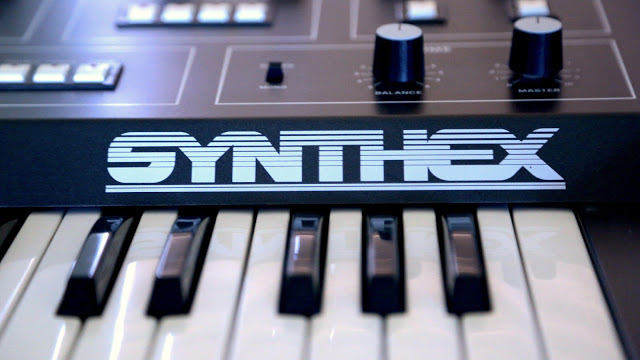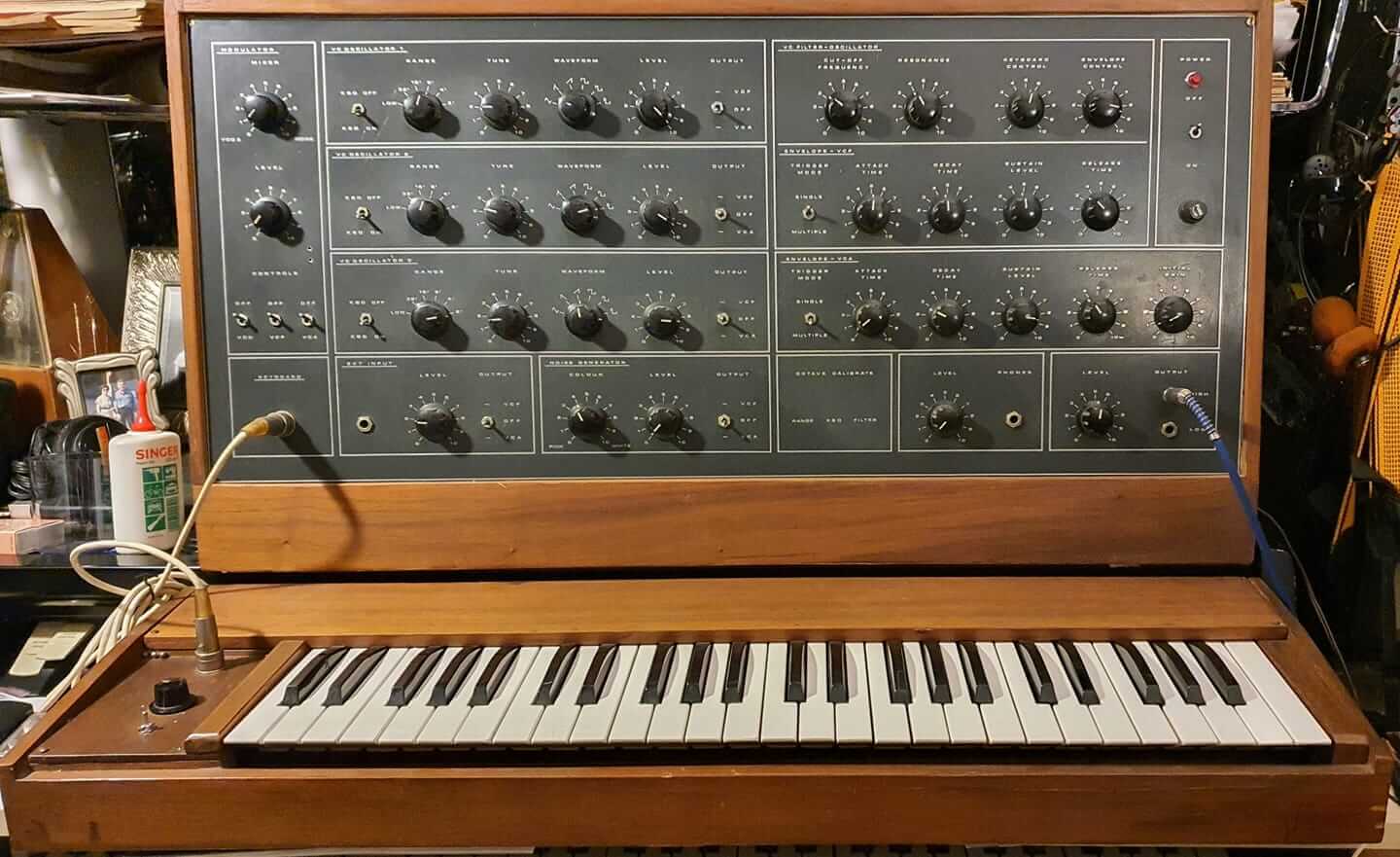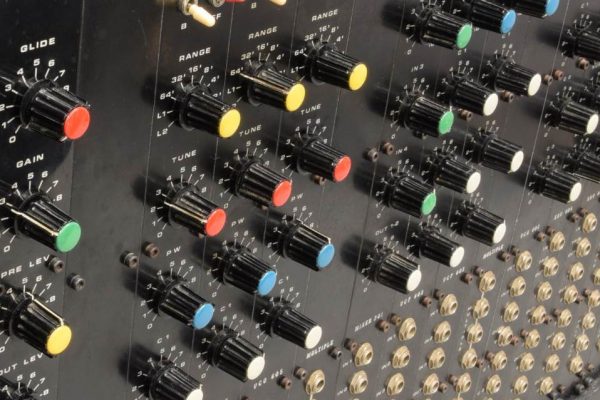”Maggi's name is inextricably linked to his masterpiece, the beautiful Synthex analog synthesizer. but the brilliant designer has had a past full of innovation, which places him alongside characters such as Moog, Buchla, Taro, Pearlman.
Lorenzo
With this article, the section of the site concerning the Synthesis is officially inaugurated.
The synthesizer, an electronic instrument through which we try to reproduce sounds already known and always create new ones, sees its best-known exponent in the products marketed by the famous American engineer Robert Moog but there are a whole series of inventors who have contributed more or less incisive to the development of the synth as an innovative instrument.
Music and the search for the imitation of sounds are as old as the world. In fact, a big part of terrestrial being, carries within itself the most ancient musical instrument, the voice, which reaches very high abilities in man, so much so that it can easily be considered the first synthesizer in history.
Over time the possibilities have been extended to truly fascinating levels, up to obtaining vocal polyphony, examples of this are found especially in Asian cultures but also in musicians closest to us.
This is the case of Demetrio Stratos, the late singer of Area, who gave a high demonstration of his exceptional vocal skills in some solo records dedicated to the theme of ‘playing the voice’ and which amply illustrate his incredible skills in vocal polyphony (diplophony, triplophony, two-tone and diphonic sounds, laryngeal whistle).
But there is a whole fervent movement of artists who are developing vocal polyphony, a leading exponent is the German musician Anna-Maria Hefele.
Demetrio Stratos – Flautofonie ed altro (Cantare La Voce – 1978)
Hanna-Maria Hefele – Polyphonic singing demonstration
However, we will come back to this subject later on and instead turn to Mr. Mario Maggi.
Anyone who has followed his work closely knows that Mario Maggi was at least 10 years ahead of everyone else and that the Italian electronics industry did not do much to invest in him and support his research as it would have been logical to do.
Yet his story, as we will discover, is that of a great innovator and, due to the determination and the enormous efforts he had to support to be able to give his masterpieces to the world, also of a real hero.
And it is not at all strange that, in Italian synth enthusiasts and experts, hearing or reading that slightly mystical name always awakens a mix of affection and national pride, that kind of feeling that warms the hearts of fans, as it happens for Alfa Romeo and Ferrari.
It is therefore absolutely necessary to pay him a tribute and, being a character far from the scene, of which it is not easy to find news and reconstruct history and chronology, this article will be updated over time, as further news will come to the surface so that we can make as accurate a picture as possible of the history of this fascinating person.
But let’s get started.
At the end of the 60s, a very young electronic engineer in love with the world of musical electronics sent his first projects to the sector magazines. The first of which is known to date, published in the CQ Elettronica magazine, is an effects circuit that connected to guitar or organ produces “spatial sounds”, probably something like a ring modulator.
But we will let him himself tell the beginnings of his career:
“ When I was 17 I created an entire collection of guitar effects for a friend. One afternoon, he came to my house with an Emerson Lake & Palmer record and made me listen to Lucky Man. The sound of what he thought was a guitar solo, had so impressed him that he asked me to build an effect that could make his guitar that way.
What he thought was an effect, however, was not a guitar, but the most wonderful synth solo I had listened to until then. I immediately understood that this sound could not come from a guitar.
A week before, I had been in an electronics store and discovered a magazine with an impressive image on the cover. In the photo there was a large piano keyboard with an equally large control panel with a huge number of colored buttons on it.
from the magazine, I discovered that it was an ARP 2500 exhibited in a modern art gallery in Milan. A few days later I contacted that gallery and managed to get an appointment. When I got there, I was completely alone for a few hours in the room where the ARP 2500 was on display and I was able to study it extensively.
I can barely find the words to express the emotions I felt in those hours, but it was then that I decided to dedicate all my work and my creation to the development and design of synthesizers.”
We move to the early 70s, when the monophonic prototype still in the possession and use of Enrico Olivieri of the progressive group Metamorfosi and his friend since school comes to light, and thanks to which the name of Maggi becomes part of the collective imagination of Italian and foreign enthusiasts.
“After the episode with my friend, I started building my monophonic synthesizer.
At first, I had trouble compensating for oscillator temperature fluctuations until I found an integrated circuit that was not used by anyone at the time. Probably because it was just very expensive. Using this integrated, I suddenly realized that my first synthesizer, in terms of oscillator stability, was far superior to any other device on the market.
This was the fundamental reason why I decided to continue building synthesizers. I wanted to make them better and better. ”
This synth clearly can be heard on the Metamorfosi records and in the concerts that the group still plays.
Enrico Olivieri (Metamorfosi):
“It all started at school, in 1970, when my friend Mario Maggi and I attended the Enrico Fermi electronics technical institute.
At that time Rome was full of wineries and clubs where a multitude of bands found their space to rehearse and perform and, while I passed from one group to another (first accompanied by my inseparable Farfisa organ, then by the Pari organ and by the Crumar electronic piano, both amplified with a 250 watt Lombardi leslie), Mario delighted in modifying amplifiers, optimizing effects for guitar and vocals, and poking his nose into everything related to the electronics available for music, most of the times with exciting results.
One day Mario invited me to go to his laboratory and, without giving me further explanations, he told me that he wanted me to try a “bomb”.
Once arrived, on a table that had nothing to envy to that of the famous Disney’s Gyro Gearloose, I saw a multicolored tangle of electric wires among which a sheet with some uncovered potentiometers was hardly distinguishable: it was of the first oscillator with a low-pass filter built by my friend.
We spent the whole night listening and watching on the oscilloscope sinusoids, saw teeth, modular brackets, filter envelopes and everything that that little devil could produce, with the same curiosity as a child struggling with the new toy.
From that evening, many were the meetings during which Mario made me try and listen to the result of the enlargements and improvements of his project; after a gestation period of many months, a true monophonic synthesizer was born, the first built by Mario Maggi, who entered by force to be part of my instrumentation. Even today, 35 years after its construction, it is fully functional and I use it in all the Metamorfosi concerts.”
An excerpt from the album Metamorfosi (Inferno – Introduzione)
Probably derived from the first, was this other mysterious monophonic, which is thought to date back to the first half of the 70s, also in a single copy, and of which unfortunately little is known, except that it was produced by Jen, in a few dozen specimens, with another panel graphic and the name ‘Synt-O-Rama’.
Of those dozens of specimens, to date we only know the one in possession of Lucio Kraushaar, who personalized it in walnut wood and who kindly provided us with an image, together with the brochures and this pleasant testimony:
«He designed the first synth here in my house where I hosted him for a few days. He had told his family that he was going on holiday to the sea, I left him the house keys, I had to fly (for work). He slept during the day and studied at night. I remember once for a shift I had to get up early but my alarm clock was broken. I had a cassette recorder, Mario in four and in a moment he made a circuit that, connected to the recorder, woke me up with music.»
Synths derived from these first two works were created, among others, for Vittorio Nocenzi of Il Banco del Mutuo Soccorso, Roberto Turbitosi, Mario Natali. The monophonic SYNTH designed by Mario Maggi was a real gem of stability: no trace of the contact problems of the Arp Odyssey, and it did not suffer from the chronic loss of intonation of the MiniMoog at low frequencies.
Maggi’s mono-synth was stable, extremely stable, and it’s no wonder that Enrico Olivieri still uses it today.
Then follows the modular guitar synth that Maggi created in 1975 (also in a unique example) which was requested by a client from Bologna and which should now be in France.
Maggi Modular Guitar Synth
According to the auction house that oversaw the sale (link), the technician who reviewed it argues that it is a highly superior work, in terms of design and organization of the circuits, to similarly designed PPGs.
How Maggi’s modular guitar synth sounds. For the original go to the link
However, Maggi had already sensed that things were changing and that the greater diffusion of synths, even for domestic use, had led to the need for machines with increasingly user-friendly interfaces, compared to being forced to continually modify the parameters to obtain the desired sound, and that musicians would have felt the need to be able to store their own sounds, without having to use only the factory presets.
At the time, however, low-cost microprocessors did not yet exist, so already in 1974 he had started working on a discrete components logic board project that would allow him to avoid the use of the unavailable processors and that, combined with the creation of a revolutionary keyboard with optical sensors, which allowed to avoid the troubles caused by electromechanical contacts, will lead in 1977 to the completion of MCS70, or Memory Controlled Synthesizer.
But we will talk about this in the SECOND PART.




















